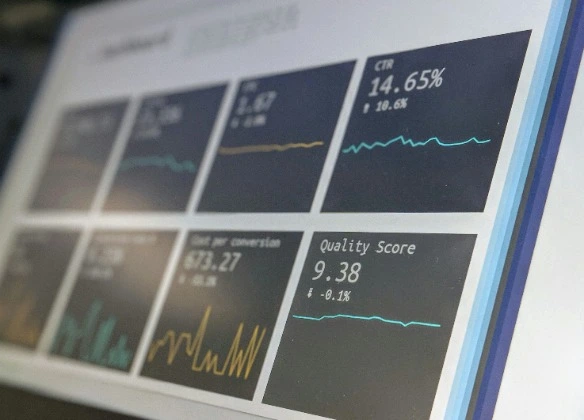

Americans are approaching credit differently today. In the wake of digital transformation and economic disruption, borrowing behavior has shifted. Traditional loan models are being reexamined as new priorities emerge—convenience, transparency, and financial control. With greater access to financial literacy tools, modern consumers are borrowing more intentionally than ever before. And lenders are adjusting accordingly.
This article explores how credit behavior has evolved and how those shifts are redefining consumer loan preferences.
The Decline of One-Size-Fits-All Lending
Credit habits have become more personalized. The days when most borrowers lined up for long-term, fixed-rate loans are over. Today’s borrowers seek flexibility. They want to borrow only what they need, when they need it, without being locked into years of repayment. This trend has reduced demand for large, traditional installment loans and boosted interest in smaller, short-term credit options.
Consumers now weigh repayment structure just as heavily as loan size or APR. A predictable payment plan used to be the top priority. Now, borrowers want repayment terms that align with their cash flow—especially those living paycheck to paycheck. This shift has encouraged financial providers to offer products with adjustable repayment schedules, allowing users to pay early or extend terms without penalties.
At the same time, consumers are becoming more selective about which types of loans best suit their situation. Whether it’s a secured or unsecured loan or a fixed-rate option, people are no longer defaulting to a single method of borrowing. They’re comparing structures, reading reviews, and weighing trade-offs before applying.
Rising Preference for Digital and On-Demand Credit
Technology has radically reshaped how people apply for loans. Modern borrowers expect speed and convenience. In-person applications and long approval delays are no longer acceptable. Most want access to credit from their phone, preferably within minutes. That’s one of the reasons digital lenders with mobile-first platforms have captured significant market share. These platforms eliminate friction by offering fast applications, soft credit checks, and instant funding for approved borrowers.
The rise of embedded finance—credit offers directly inside apps people already use—has accelerated this trend. Consumers now encounter financing options while managing budgets, shopping online, or even booking services. If the process feels intuitive and secure, they’re more likely to borrow. Ease of access, not just cost, has become a deciding factor.
Transparency Is the New Currency
Borrowers are demanding clarity in every aspect of lending. Unclear fees, legalese-laden contracts, and misleading interest rates are driving users away. Transparency now functions as a competitive advantage. Loan products that clearly explain the total cost of borrowing, repayment obligations, and potential penalties are seeing stronger uptake—especially among younger adults.
Millennials and Gen Z are hyper-aware of deceptive lending practices. They prefer working with lenders who explain credit terms in plain language and provide tools to track debt in real time. This demographic is also more likely to compare multiple lenders and read reviews before borrowing. That behavior reflects a more empowered, research-driven approach to credit decisions.
Shifting Attitudes Toward Credit Scores and Responsibility
The influence of the credit score on borrowing remains strong, but attitudes are changing. Consumers no longer see credit as just a score to maintain—they view it as a tool to manage. There’s increased awareness around credit utilization, on-time payments, and maintaining diverse account types. This has led to more responsible usage of credit cards and short-term loans.
At the same time, a growing number of borrowers distrust traditional credit scoring models. They’re skeptical of how scores are calculated and believe they don’t always take into account real-life financial behavior. In response, some lenders have begun to use alternative data—such as rent, utility payments, or banking history—to determine eligibility. This offers a path to credit for consumers who’ve historically been underserved.
The Role of Economic Pressure and Financial Resilience
Economic uncertainty has played a major role in shifting loan preferences. During times of inflation or job insecurity, people become more cautious. They don’t want long-term debt—they want liquidity. This has increased interest in revolving credit lines, buy-now-pay-later programs, and microloans. These products offer flexibility without the weight of fixed monthly obligations over several years.
Financial resilience has become a top concern. Consumers want credit that helps them navigate setbacks, not credit that adds pressure. As a result, features like payment pauses, hardship programs, or interest-free grace periods have become more appealing. Lenders who offer these features are gaining consumer trust—even if their interest rates aren’t the lowest.
Personalized Lending Is Becoming the Standard
Another major change is the rise of customized loan experiences. Thanks to AI and data analytics, lenders can now tailor credit offers to match individual spending behavior and financial goals. For example, a borrower with a steady income and no history of missed payments might receive a lower rate, a longer term, or higher limit—automatically.
This type of personalization aligns with changing borrower expectations. People don’t want a generic, vanilla offering, they want one that recognizes their habits and adapts to their needs. The more accurately a loan product fits their lifestyle, the more likely they are to use it again. In this way, loan products are starting to resemble subscription services that are designed around user behavior and preferences.
A Credit Landscape Shaped by Choice
Ultimately, what today’s borrowers want is control. They want to decide when and how to borrow, how much to repay, and whether a loan aligns with their long-term financial plans. They reject rigidity and embrace tools that put them in the driver’s seat. That’s why lenders who can adapt—through tech, transparency, and user-focused design—will shape the future of consumer credit.
And that future is already here. The borrower profile is more complex, more informed, and more selective than ever. They value speed, clarity, and control. To earn their business, lenders must understand not just their credit history—but their credit habits.

Technology
25 March 2025
Ransomware-As-A-Service Variants on the Rise With Critical Infrastructure Providers at the Greatest Risk

Business Advice
25 March 2025
Claims Processing Automation: How Insurers Can Cut Costs and Improve CX

Technology
18 March 2025
Secret Signs Your Internet Security Has Been Compromised






















